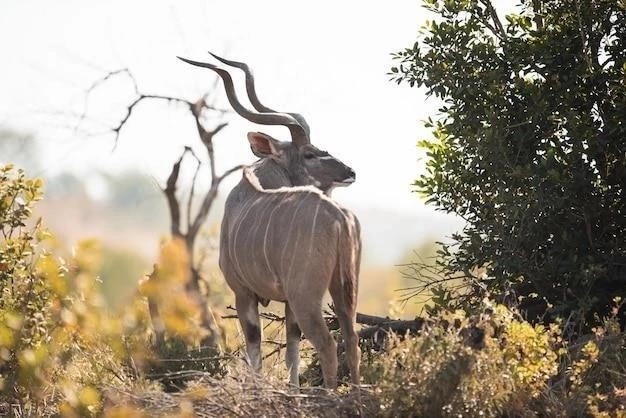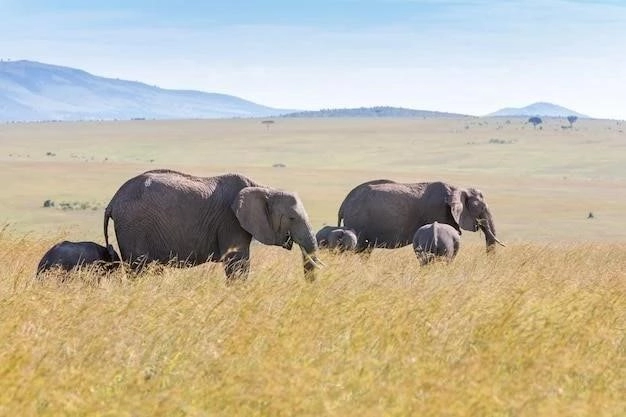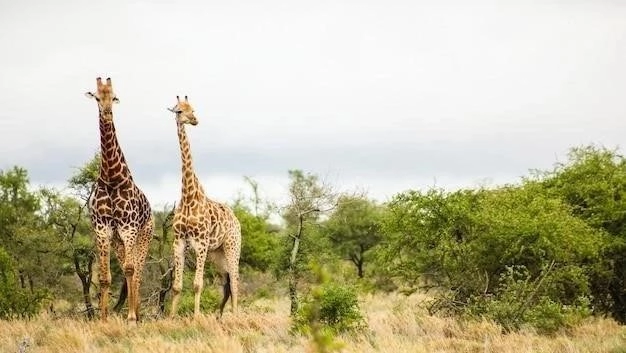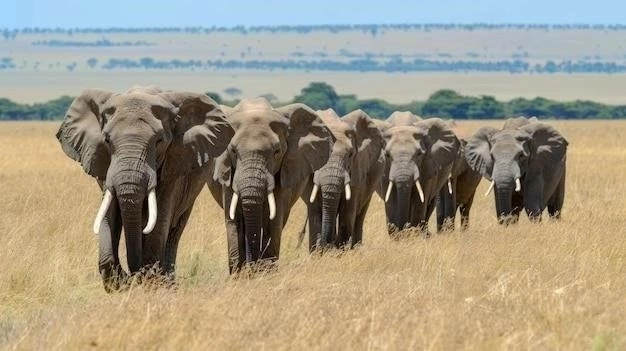The Serengeti National Park, a vast expanse of pristine African savanna, is a jewel in Tanzanias crown and a UNESCO World Heritage Site. Its name, derived from the Maasai word “Siringitu” meaning “the place where the land runs forever,” aptly describes the seemingly endless plains that characterize this iconic park.
Location and Geography
Located in northern Tanzania, the Serengeti National Park spans over 14,763 square kilometers (5,700 square miles). It is bordered to the north by Kenyas Maasai Mara National Reserve, forming a contiguous ecosystem that supports one of the worlds most spectacular natural events: the Great Migration.
The park encompasses a variety of landscapes, including:
- Southern Serengeti Plains: Characterized by short-grass plains, this region is famous for the wildebeest calving season in February and March, when thousands of calves are born each day.
- Western Corridor: Dominated by the Grumeti River, this region is known for its large Nile crocodile populations and its challenging river crossings during the Great Migration;
- Northern Serengeti: This region is home to the Lobo Valley, known for its resident wildlife populations, including elephants, giraffes, and lions.
The Great Migration
The Serengeti National Park is synonymous with the Great Migration, an annual spectacle that sees over 1.5 million wildebeest and hundreds of thousands of zebras and gazelles embark on a circular journey in search of fresh grazing and water. This epic migration is driven by the rains٫ with the herds moving clockwise through the Serengeti and into the Maasai Mara before returning south.
Witnessing the Great Migration is a truly unforgettable experience, with thundering hooves, river crossings fraught with danger, and the constant presence of predators creating a symphony of life and death in the heart of Africa.

Wildlife
Beyond the Great Migration, the Serengeti is home to an astounding diversity of wildlife. The park boasts one of the highest concentrations of large mammals on earth, with over 3٫000 lions٫ 1٫000 leopards٫ 550 cheetahs٫ and significant populations of African elephants٫ African buffalo٫ Nile crocodiles٫ and over 500 bird species.
The parks diverse habitats support a wide range of other animals, including:
- Masai giraffes
- Spotted hyenas
- African wild dogs
- Cheetahs
- Black rhinoceros (highly endangered)
- Hippopotamuses

Safari Experience
A Serengeti safari is an experience of a lifetime. The park offers a range of safari options, from traditional game drives in 4×4 vehicles to walking safaris, hot air balloon rides, and cultural visits to Maasai villages.
Accommodation options are equally diverse, ranging from luxury lodges to tented camps, catering to a variety of budgets and preferences. Many lodges and camps offer stunning views of the savanna, allowing visitors to immerse themselves in the sights and sounds of the African wilderness.
Best Time to Visit
The best time to visit the Serengeti depends on your interests and priorities. The dry season (June to October) offers excellent game viewing opportunities, as wildlife concentrates around water sources. The wet season (November to May) brings lush landscapes and the chance to witness the wildebeest calving season.

Conservation
The Serengeti National Park faces a number of conservation challenges, including habitat loss, poaching, and human-wildlife conflict. The Tanzanian government, in collaboration with international organizations and local communities, is working to address these challenges and ensure the long-term survival of this iconic ecosystem.

Tips for Planning Your Trip
- Book your safari well in advance, especially if traveling during peak season.
- Pack light, neutral-colored clothing, and essential safari gear, including a hat, sunglasses, sunscreen, and insect repellent.
- Respect the wildlife and follow your guides instructions at all times.
- Consider purchasing travel insurance that covers medical emergencies and safari-related activities.
- Embrace the opportunity to disconnect from technology and immerse yourself in the natural world.
Conclusion
The Serengeti National Park is a testament to the raw beauty and untamed wilderness of Africa. From the thundering herds of the Great Migration to the intimate encounters with its diverse wildlife, a Serengeti safari is an unforgettable journey into the heart of one of the worlds most iconic natural wonders.
Beyond the Big Five: Unveiling the Serengetis Hidden Gems
While the Serengetis megafauna undoubtedly captivates, the discerning traveler will discover a tapestry of ecological wonders often overlooked amidst the grandeur of the plains. The parks intricate web of life extends far beyond the charismatic megafauna, offering a glimpse into the delicate balance that sustains this African Eden.
Avian Abundance: Soaring Above the Savanna
The Serengeti boasts an avian diversity that rivals its mammalian spectacle. Over 500 bird species grace the skies, transforming the park into an ornithologists paradise. Witness the majestic wingspan of the martial eagle as it soars above the plains, or marvel at the vibrant plumage of lilac-breasted rollers perched atop acacia trees. Keen observers will spot the endemic grey-breasted spurfowl darting through the undergrowth, while flocks of migratory carmine bee-eaters add splashes of vibrant color to the landscape.
The Secret Life of Serengetis Flora: A Botanical Wonderland
Beyond the iconic acacia woodlands and sweeping grasslands, a closer look reveals a fascinating array of plant life. The resilient baobab tree, with its distinctive silhouette and ability to store vast quantities of water, stands as a testament to the regions resilience against arid conditions. The delicate blossoms of the sausage tree, so named for its unusual fruit, attract a myriad of pollinators, while the medicinal properties of the African devils claw have been utilized by local communities for generations.
Cultural Immersion: Connecting with the Maasai
No journey to the Serengeti is complete without experiencing the rich cultural heritage of the Maasai people. These semi-nomadic pastoralists have co-existed with the Serengetis wildlife for centuries, their lives intricately intertwined with the rhythms of nature. Engage in a respectful cultural exchange, learning about their traditional ways of life, intricate beadwork, and cattle-herding practices. Such encounters offer a profound appreciation for the human connection to this remarkable ecosystem.
Preserving a Legacy: Sustainable Tourism in the Serengeti
The Serengetis future hinges upon a delicate balance between conservation and tourism. Opt for tour operators committed to sustainable practices, such as minimizing environmental impact, supporting local communities, and adhering to strict anti-poaching initiatives. By choosing responsible tourism, visitors contribute directly to the preservation of this natural treasure for generations to come.
Delving Deeper: Unveiling the Serengetis Ecological Nuances
While the Serengetis megafauna and iconic migration justifiably command attention, a deeper exploration unveils a complex tapestry of ecological interactions and subtle wonders that contribute to the parks vitality. This intricate web of life, often overlooked amidst the grandeur of the savanna, offers a nuanced understanding of the Serengetis ecological significance.
Beyond Predator and Prey: Intertwined Relationships on the Savanna
The Serengetis ecosystem extends far beyond the predator-prey dynamics readily observed on a game drive. A closer examination reveals a fascinating interplay between seemingly disparate species. The oxpecker, a small bird often seen perched atop grazing mammals, plays a crucial role in parasite control, meticulously removing ticks and other ectoparasites. This symbiotic relationship benefits both parties, highlighting the interconnectedness of life on the savanna.
Furthermore, the Serengetis dung beetles, often overlooked denizens of the soil, provide an invaluable service as natures recyclers. They efficiently break down dung, returning vital nutrients to the soil and preventing the spread of disease. This unheralded ecological role underscores the importance of biodiversity at every level.
Microcosms of Life: Unveiling the Serengetis Hidden Habitats
The Serengetis diverse landscape encompasses a mosaic of habitats, each harboring unique ecological niches. The kopjes, rocky outcrops scattered across the plains, provide refuge for a surprising array of creatures. Hyraxes, small mammals resembling rodents, navigate the crevices, while klipspringers, diminutive antelopes with remarkable agility, scale the steep slopes. These rocky islands amidst a sea of grass offer a glimpse into the adaptability of life in challenging environments.
Along the Serengetis waterways, riparian forests provide a stark contrast to the open plains. Here, towering fig trees offer shade and sustenance, attracting a different cast of characters. Colorful birds flit through the foliage, while vervet monkeys scamper through the canopy. These verdant corridors showcase the importance of habitat diversity in supporting a wide array of species.
A Legacy in the Balance: The Future of the Serengeti
The Serengetis future hinges on a delicate equilibrium. Climate change, habitat fragmentation, and human-wildlife conflict pose significant challenges to the parks long-term health. Protecting this natural treasure requires a multifaceted approach, encompassing scientific research, community engagement, and sustainable tourism practices.
By fostering a deeper understanding of the Serengetis ecological complexities, we cultivate a greater appreciation for its fragility and the imperative to safeguard its future. Through responsible stewardship and collaborative conservation efforts, we can ensure that the Serengeti continues to inspire awe and wonder for generations to come.
Navigating the Human Footprint: Challenges and Opportunities in the Serengeti
The Serengeti, while a beacon of pristine wilderness, exists in a dynamic relationship with human activities. Recognizing and addressing these interactions is crucial to ensure the longevity of this extraordinary ecosystem. We must move beyond a romanticized view of untouched nature and engage with the realities of conservation in the 21st century.
Beyond Park Boundaries: The Importance of Connectivity
The Serengetis ecological integrity extends beyond the designated park boundaries. Wildlife corridors, connecting the Serengeti to surrounding ecosystems, are essential for maintaining gene flow and facilitating seasonal migrations. However, human encroachment, driven by agriculture and infrastructure development, threatens these vital lifelines. Sustainable land-use practices and community-based conservation initiatives are paramount to mitigate habitat fragmentation and ensure the long-term viability of migratory species.
Climate Change: An Uncertain Future for Fragile Ecosystems
The specter of climate change casts a long shadow over the Serengeti. Altered rainfall patterns, increased temperatures, and extreme weather events pose significant challenges to the delicate balance of this ecosystem. Drought can devastate prey populations, while shifting vegetation patterns impact grazing dynamics. Adapting to these changing conditions requires a proactive approach, incorporating climate-resilient strategies into conservation planning and management.
Human-Wildlife Conflict: Finding Coexistence in Shared Landscapes
As human populations grow and land-use intensifies, encounters between people and wildlife are inevitable. Crop raiding, livestock predation, and the transmission of diseases pose challenges for both communities and conservation efforts. Finding sustainable solutions requires a nuanced approach, balancing the needs of local people with the imperative to protect wildlife. This includes promoting coexistence strategies such as predator-proof enclosures, community-based wildlife management, and education programs that foster understanding and tolerance.
Investing in the Future: A Shared Responsibility for the Serengeti
The Serengetis future lies in the hands of a global community. Governments, conservation organizations, researchers, local communities, and tourists all have a role to play in safeguarding this natural treasure.
- Supporting Scientific Research: Continued scientific research is essential to inform conservation strategies, monitor ecosystem health, and develop innovative solutions to emerging challenges.
- Empowering Local Communities: Engaging local communities in conservation efforts, providing economic opportunities, and ensuring equitable access to resources are crucial for fostering stewardship and long-term sustainability.
- Promoting Responsible Tourism: Tourists can contribute to the Serengetis well-being by choosing ethical tour operators, minimizing their environmental footprint, and respecting local cultures.
The Serengeti stands as a powerful symbol of Earths natural heritage. By embracing a holistic approach to conservation, one that acknowledges the interconnectedness of ecological and human systems, we can ensure that this extraordinary ecosystem continues to inspire awe and wonder for generations to come. The legacy we leave behind depends on the choices we make today.
The Enduring Allure of the Serengeti: A Timeless Destination for the Modern Explorer
The Serengetis appeal transcends the boundaries of time and culture. It beckons to a primal instinct within us, a yearning to connect with the raw beauty and untamed spirit of the natural world. For the modern explorer, seeking respite from the clamor of urban life, the Serengeti offers an immersive experience that rejuvenates the soul and ignites a sense of wonder.
Beyond the Safari: Experiencing the Serengetis Cultural Tapestry
While the Serengetis wildlife spectacles undoubtedly take center stage, a deeper understanding of this landscape emerges when we embrace its cultural dimensions. The Maasai people, traditional pastoralists who have coexisted with the Serengetis wildlife for centuries, offer a unique perspective on the delicate balance between human needs and conservation. Engaging with Maasai communities through culturally sensitive tourism initiatives provides invaluable insights into their traditions, knowledge systems, and perspectives on land stewardship.
Preserving a Legacy for Future Generations: The Imperative of Sustainable Tourism
Tourism, while a vital economic driver for the region, must be managed judiciously to ensure its long-term sustainability. The Serengetis carrying capacity, both ecological and social, must be carefully considered to prevent detrimental impacts on its fragile ecosystems and cultural heritage. By embracing low-impact tourism practices, promoting responsible wildlife viewing, and supporting community-based conservation initiatives, we can help safeguard this natural treasure for generations to come.
A Call to Action: Becoming Stewards of the Serengeti
The Serengetis future rests not solely in the hands of conservationists and policymakers, but in the collective consciousness of a global community. As individuals, we can all contribute to its preservation by:
- Supporting Ethical Tourism Operators: Choose tour companies with a demonstrated commitment to sustainable practices, community engagement, and wildlife conservation.
- Minimizing Our Footprint: Practice responsible waste management, conserve water and energy, and respect wildlife and local cultures.
- Advocating for Conservation: Raise awareness about the Serengetis importance, support conservation organizations, and advocate for policies that protect natural heritage.
The Serengeti stands as a testament to the Earths resilience and the interconnectedness of all living things. By embracing our role as stewards of this irreplaceable ecosystem, we can ensure that its beauty, biodiversity, and cultural heritage continue to inspire and captivate generations to come.
Beyond Preservation: Embracing Innovation and Collaboration for the Serengetis Future
Safeguarding the Serengetis ecological integrity requires not only a deep understanding of its complexities but also a forward-thinking approach that harnesses technological advancements and fosters collaborative partnerships. By embracing innovation and interdisciplinary collaboration, we can navigate the challenges of the 21st century and ensure a vibrant future for this iconic ecosystem.
Leveraging Technology for Conservation: Data-Driven Insights and Proactive Management
Technological innovations are transforming the field of conservation, providing unprecedented tools for monitoring, analyzing, and protecting natural resources. In the Serengeti, these advancements are being employed to:
- Track Wildlife Movements: GPS collars and remote sensing technologies enable researchers to monitor animal movements, identify migration corridors, and understand behavioral patterns crucial for mitigating human-wildlife conflict.
- Combat Poaching and Illegal Wildlife Trade: Artificial intelligence, combined with camera traps and predictive analytics, are being deployed to detect and deter poaching activities, safeguarding vulnerable species.
- Monitor Ecosystem Health: Satellite imagery and remote sensing platforms provide valuable data on vegetation cover, rainfall patterns, and land-use changes, enabling early detection of environmental stressors and informing adaptive management strategies.
Fostering Collaborative Partnerships: A Multifaceted Approach to Conservation
Addressing the complex challenges facing the Serengeti requires a collaborative approach that transcends traditional boundaries. By fostering partnerships between governments, conservation organizations, research institutions, local communities, and the private sector, we can leverage diverse expertise, resources, and perspectives to develop holistic and sustainable solutions. Key areas of collaboration include:
- Community-Based Conservation: Empowering local communities as stakeholders in conservation initiatives is crucial for fostering ownership, promoting sustainable livelihoods, and ensuring the equitable distribution of benefits.
- Transboundary Conservation: Given the transboundary nature of the Serengeti ecosystem, collaborative efforts between Tanzania and Kenya are essential for harmonizing conservation policies, managing shared resources, and addressing regional threats.
- Knowledge Sharing and Capacity Building: Facilitating the exchange of knowledge, best practices, and technical expertise among stakeholders is vital for building local capacity and ensuring the long-term success of conservation programs.
The Serengetis future hinges on our ability to adapt, innovate, and collaborate. By embracing a forward-looking approach that integrates scientific rigor, technological advancements, and inclusive partnerships, we can ensure that this iconic ecosystem continues to thrive, inspiring awe and wonder for generations to come.
Addressing Emerging Challenges: Climate Change and the Future of the Serengeti
The Serengeti, like many of the worlds most treasured ecosystems, faces unprecedented challenges posed by a rapidly changing climate. Understanding these challenges and implementing proactive adaptation strategies is crucial for safeguarding the long-term health and resilience of this iconic landscape.
Climate Change Impacts: A Shifting Landscape of Uncertainty
Climate change projections for the Serengeti region paint a sobering picture, with potential impacts including:
- Altered Rainfall Patterns: Shifts in precipitation patterns, including more frequent and intense droughts, could disrupt water availability, impact vegetation growth, and alter wildlife migration patterns.
- Rising Temperatures: Increased temperatures could exacerbate heat stress on wildlife, particularly during the dry season, potentially impacting reproductive rates and overall species health.
- Increased Disease Risk: Changes in temperature and humidity can create favorable conditions for the spread of infectious diseases, posing a threat to both wildlife and livestock populations.
Building Resilience: Adaptation Strategies for a Changing Climate
Mitigating the impacts of climate change requires a multifaceted approach that combines scientific research, adaptive management, and community engagement. Key strategies for building resilience in the Serengeti include:
- Enhancing Water Resource Management: Implementing sustainable water management practices, such as rainwater harvesting, water-use efficiency measures, and restoring degraded water catchments, is crucial for mitigating drought impacts.
- Protecting Wildlife Corridors: Ensuring connectivity between protected areas and maintaining wildlife corridors is essential for facilitating species adaptation and movement in response to changing environmental conditions.
- Strengthening Community Resilience: Supporting community-based adaptation initiatives, such as promoting drought-resistant crops, diversifying livelihoods, and improving access to climate information, is vital for building the resilience of local communities.
A Legacy of Conservation: The Serengetis Enduring Value
The Serengeti stands as a testament to the power of conservation, a beacon of hope in a world grappling with environmental challenges. Its enduring value lies not only in its ecological significance but also in its cultural importance, economic potential, and intrinsic beauty. By continuing to invest in research, conservation, and sustainable management, we can ensure that the Serengetis legacy of wonder and inspiration endures for generations to come.
Harnessing the Power of Education and Advocacy
Conservation efforts are most effective when coupled with robust education and advocacy initiatives that inspire action and foster a sense of stewardship for the Serengeti. Key strategies include:
- Engaging Local Communities: Integrating conservation education into local school curricula and community programs can empower future generations to become stewards of their natural heritage.
- Promoting Sustainable Tourism: Developing responsible tourism practices that minimize environmental impact, respect local cultures, and generate economic benefits for communities can contribute to long-term conservation funding and support.
- Amplifying the Serengetis Story: Utilizing multimedia platforms, storytelling, and citizen science initiatives can raise global awareness about the Serengetis ecological significance, the challenges it faces, and the importance of its preservation.
Investing in Scientific Research: Unlocking the Secrets of a Complex Ecosystem
Continued scientific research is paramount to understanding the intricate dynamics of the Serengeti ecosystem and informing effective conservation strategies. Research priorities include:
- Climate Change Modeling: Developing sophisticated models to predict the long-term impacts of climate change on the Serengetis biodiversity, ecological processes, and ecosystem services is crucial for proactive adaptation planning.
- Wildlife Disease Ecology: Investigating the emergence, transmission, and control of wildlife diseases, particularly in the context of climate change and human-wildlife interactions, is essential for safeguarding animal and human health.
- Human-Wildlife Coexistence: Developing innovative strategies to mitigate human-wildlife conflict, promote coexistence, and ensure the equitable sharing of resources is essential for the long-term sustainability of both people and wildlife.
A Shared Vision for the Future: Collaboration, Innovation, and Stewardship
The Serengetis future hinges on our collective commitment to its preservation. By embracing a holistic approach that integrates cutting-edge science, inclusive collaboration, and proactive adaptation, we can ensure that this irreplaceable ecosystem continues to thrive, captivating hearts and minds for generations to come. The Serengetis story is a testament to the power of collective action and a reminder that the fate of our planets natural wonders rests in our hands.
The Vital Role of Technology and Innovation in Serengeti Conservation
As we navigate the complexities of the 21st century, technology emerges as a powerful ally in our endeavors to safeguard the Serengeti. By embracing innovation, we can enhance monitoring efforts, strengthen anti-poaching initiatives, and empower communities with the tools and knowledge to become effective stewards of their natural heritage.
Leveraging Technology for Enhanced Monitoring and Research
Integrating advanced technologies into conservation research and monitoring programs provides invaluable insights into the Serengetis intricate dynamics; Key applications include:
- Remote Sensing and Aerial Surveillance: Utilizing satellite imagery, drones, and aerial surveillance techniques allows researchers and park managers to monitor wildlife populations, track migration patterns, detect poaching activities, and assess habitat health over vast areas with greater efficiency and precision.
- Bioacoustic Monitoring: Deploying acoustic sensors across the ecosystem provides a non-invasive method for monitoring wildlife presence, behavior, and distribution, particularly for elusive or nocturnal species. This technology aids in understanding population dynamics, identifying potential threats, and evaluating the effectiveness of conservation interventions.
- Data Analysis and Predictive Modeling: Harnessing the power of artificial intelligence and machine learning enables researchers to analyze vast datasets collected from various monitoring sources, identifying patterns, predicting trends, and informing adaptive management strategies for wildlife conservation, habitat restoration, and human-wildlife coexistence.
Empowering Communities through Technology Transfer and Capacity Building
Technology transfer and capacity building initiatives are essential for equipping local communities with the tools and knowledge to actively participate in conservation efforts. Key approaches include:
- Mobile Technology for Citizen Science: Empowering local communities to contribute to data collection through mobile applications and platforms enhances monitoring efforts while fostering a sense of ownership and stewardship among stakeholders.
- Early Warning Systems for Poaching Prevention: Implementing real-time monitoring systems, coupled with community-based anti-poaching patrols, strengthens enforcement efforts and provides crucial data for informed decision-making in combating wildlife crime.
- Sharing Knowledge and Building Local Expertise: Investing in training programs that equip local communities with technical skills in data analysis, remote sensing interpretation, and wildlife monitoring fosters local expertise and ensures the long-term sustainability of conservation programs.
Fostering Sustainable Development through Eco-Tourism and Innovation
Sustainable tourism, guided by ethical principles and technological advancements, can play a vital role in generating economic benefits for local communities while minimizing environmental impact. Key opportunities include:
- Virtual Tourism and Digital Storytelling: Utilizing virtual reality, augmented reality, and interactive platforms allows for immersive experiences of the Serengeti, fostering global appreciation for its value and generating revenue streams that can support conservation efforts.
- Eco-Friendly Infrastructure and Renewable Energy: Promoting the development of sustainable tourism infrastructure, such as eco-lodges powered by renewable energy sources, minimizes the ecological footprint while providing economic opportunities for local communities.
- Community-Based Tourism Initiatives: Empowering communities to develop and manage tourism ventures ensures that the benefits of tourism are equitably shared, fostering local ownership and incentivizing conservation stewardship.
By embracing a forward-thinking approach that integrates technological advancements, empowers local communities, and fosters sustainable development, we can ensure that the Serengeti remains a beacon of conservation success, inspiring wonder and awe for generations to come.










